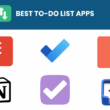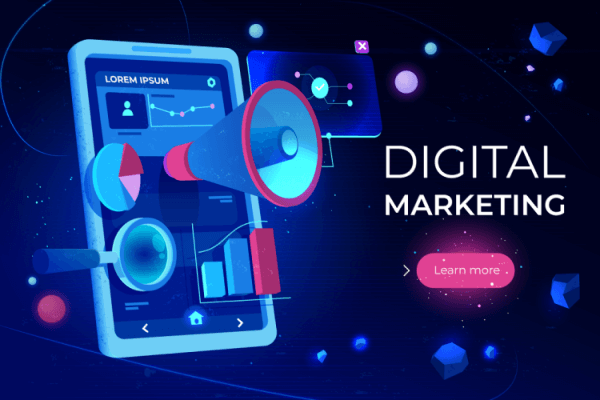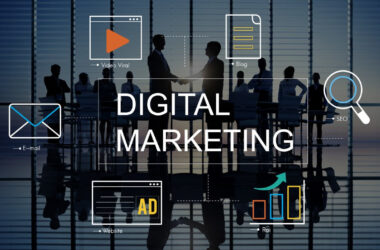Table of Contents Show
Unlock the power of digital marketing tactics for enhanced productivity and business growth. Start engaging, convert audiences, and generate expansive revenues.
Digital marketing tactics are essential for managers and entrepreneurs who want to boost their productivity and achieve better results. By implementing effective strategies such as SEO, social media marketing, and content creation, they can reach their target audience and drive business growth.
1. Understanding Digital Marketing
Digital marketing is no longer optional but a powerful tool mandatory for managers to maximize their productivity. It opens new avenues for brand visibility, customer engagement, and revenue generation.
Digital marketing strategies like SEO, social media, and email marketing are key drivers for brand visibility, customer engagement, and ultimate business growth.
Understanding digital marketing is like cracking the code for business growth. It entails strategies like SEO, social media, and email and content marketing. Managers who embrace and harness these techniques gain an unbeatable edge over competitors.
a. Definition and Scope of Digital Marketing
Defining digital marketing can be key in appreciating its vast scope. It’s a dynamic blend of tactics and strategies, paving the way for businesses to effectively reach, engage, and convert their target audience online.
Digital marketing’s boundless scope entails everything from search engine optimization (SEO), social media, email marketing, content creation, and much more. Its versatility allows managers to tap into various channels, maximizing ROI and reach.
b. Importance of Digital Marketing for Managers
In the competitive business landscape, understanding digital marketing equips managers with the marketer’s edge. This vital skill set ensures businesses harness the power of the internet to their advantage, enhancing visibility, and driving growth.
Digital marketing now rules the roost in modern management. Its immense role in influencing customer behavior, impacting brand perception, and enabling data-driven decisions makes it an indispensable part of today’s managerial toolkit.
2. Setting Clear Goals and Objectives
For a bull’s-eye, finely tune your digital marketing goals. Ensure they are precise and achievable; once hit, they should bring substantial results to your business.
In the targeted approach, appropriate digital marketing objectives play a pivotal role. By establishing clear-cut objectives, you take the guesswork out of your strategy and provide direction for your team.
a. Identifying Target Audience
Identifying your target audience effectively is the foundation of a results-driven digital marketing strategy. It’s not just about who you want to reach, but also about understanding their desires, needs, and online behaviors.
- Analyze your current customer base: Who are they and why do they buy from you?
- Survey your customers: Use online surveys to gather insights about their demographics, interests, and online habits.
- Check out your competition: Who are they targeting? Are there gaps that your business can fill?
- Create customer personas: This is a vivid description of a typical consumer that includes demographic details, interests, and motivators.
- Use digital tools: Leverage Google Analytics and social media insights to gain deeper knowledge about your audiences.
b. Defining Key Performance Indicators (KPIs)
For managers seeking to boost digital success, defining Key Performance Indicators (KPIs) is vital. These quantifiable measurements are your roadmap; they directly align with your objectives, telling you where you are, where you’re going, and how quickly you’re getting there.
- Conversion rate: This number tells you what percentage of your visitors are converting into customers or leads.
- Bounce rate: A high bounce rate indicates users are not finding what they are looking for, signaling a need to alter your content or design.
- Traffic sources: Understanding where your visitors are coming from can help you pinpoint which marketing efforts are most effective.
- Engagement: Metrics such as page views, time on site, and social shares can elucidate how much your audience is interacting with your content.
- ROI: The return on investment metric calculates the profitability of your digital marketing efforts, helping you determine if your current strategies are cost-effective.
c. Establishing Measurable Goals
To make a meaningful impact in digital marketing, scaling up by setting quantifiable goals is crucial. These targets dissuade vague intentions and allow for the precise tracking of progress.
- Identify growth areas: Set numeric targets for desired improvements in these areas. It could be a percentage increase in organic traffic or a particular number of leads to be generated within a timeframe.
- Set period-specific targets: Having yearly, quarterly, monthly, or weekly goals gives a clear idea of what needs to be achieved and by when.
- Consider ROI: Setting goals related to return on investment helps to evaluate the effectiveness of different marketing campaigns. It could be measured in dollar value or as a percentage increase.
- Aim for higher customer engagement: Define targets to increase interactions on your posts such as shares, likes, and comments. It could be a specific number or percentage increase.
- Improve conversion rates: Have clear objectives to enhance the number of conversions. It could be specific to certain actions like filling out a form, signing up for a newsletter, or purchasing a product.
3. Developing a Solid Digital Marketing Strategy
Crafting a path to victory begins with a robust digital marketing strategy. It is the compass that navigates your company’s growth trajectory, integrating all your marketing efforts.
Your digital marketing strategy is a blueprint for success. It dictates critical elements: market research, USP definition, the selection of suitable marketing channels, and a coherent content marketing plan.
Remember, a winning digital marketing strategy is not only about expenses. Proper budgeting and allocation of resources play a vital role, ensuring you’re not just throwing money at marketing, but strategically investing it.
a. Conducting Market Research
Understanding your customer’s needs, preferences, and pain points forms the bedrock of any successful digital marketing strategy. This crucial information can only be uncovered through in-depth and systematic market research.
- Compile demographic, psychographic, and technological data on your target audience
- Monitor competitors’ activities and performance in the digital space
- Conduct surveys, interviews, and focus groups with your existing customers to gather first-hand insights
- Analyze industry trends and shifts through reliable sources
- Employ advanced data analytics tools to interpret market research data
- Turn insights into actionable strategies tailored to your target audience
b. Defining Unique Selling Proposition (USP)
A U.S.P., or Unique Selling Proposition, is your digital anchor, the distinguishing factor that sets your business apart amidst the digital crowd. It’s the value proposition that yields maximum market impact, ranging from world-class customer service to unrivaled product quality or cutting-edge technology.
In the sprawling digital marketplace, uniqueness reigns supreme. Identifying your U.S.P. ensures that you communicate with potential customers not only what you sell, but why your offering is unparalleled. This alignment could be the difference between blending in and standing out; between surviving and thriving.
c. Selecting the Right Digital Marketing Channels
In the grand scheme of digital marketing, selecting the right channels is pivotal to success. This involves careful evaluation of the strengths and weaknesses of each platform, understanding your target audience, and aligning both with your business objectives.
- Evaluate each platform’s reach, engagement rate, and conversion potential
- Consider the demographic characteristics of your audience and match them with the platform
- Examine the type of content that different platforms support and identify which aligns best with your brand
- Assess the marketing costs for each potential platform
- Determine if the platform supports targeting options specific to your campaign objectives
- Analyze the platform’s capacities and limitations for tracking and analytics
d. Creating a Content Marketing Plan
Content plays a stellar role in your digital marketing strategy, acting as the heartbeat of your campaign. Stirring storytelling hooks your audience, igniting their interest and nurturing their journey from visitor to customer.
Creating an effective content marketing strategy requires a well-thought-out plan to engage. This comprises contextually relevant, unique, and value-driven material, designed to capture your audience’s attention and trigger meaningful interactions.
e. Allocating Budget and Resources
Considering the budget, allocate it wisely for maximum digital marketing impact. Dividing the budget based on the importance and potential ROI of each marketing channel can translate into profitable returns.
Strategic spending is key in resourcing your digital marketing campaigns. Prioritize areas that directly influence customer conversions and engagement, correlating higher investments with expected high-performing sectors.
4. Implementing Effective SEO Tactics
Demystifying SEO isn’t as complex as it seems. Adapting practices that focus on optimizing keywords, ensuring mobile-friendly interfaces, integrating social media, and creating high-quality content can catapult your website’s search engine ranking.
Effective SEO does more than just generate traffic – it cuts through the digital noise. A well-optimized website not only attracts the right audience but also increases your brand’s visibility, giving your business a significant edge over competitors.
a. Keyword Research and Optimization
In the labyrinth of digital marketing, keyword research is your compass, guiding you to the language of your audience. It’s a powerful tool to optimize your efforts, paving the way to success.
- Understand the search intent behind keywords
- Analyze the competitiveness of keywords
- Utilize keyword research tools like Google Keyword Planner and SEMRush to determine the popularity
- Identify long-tail keywords for niche segments
- Incorporate keywords in website content, meta tags, and URLs
- Optimize keyword placement in blog posts and product descriptions
- Track keyword performance to refine strategy over time
b. On-Page and Off-Page SEO Strategies
Unraveling the complexity of SEO practices is pivotal for any manager navigating the digital marketplace. The distinction between on-page and off-page strategies provides a road map to boost online visibility and drive organic traffic to your websites.
On-page SEO refers to optimization techniques directly applied to your website including keyword placement, meta descriptions, and ensuring quality content, all of which heightens your site’s visibility to search engine crawlers.
Contrastingly, off-page SEO targets elements outside of your website to boost rankings like backlinks from respected sites, influencer collaborations, or social media mentions. These factors enhance your brand reputation, instilling trust in your audience.
Leveraging both on-page and off-page SEO strategies synergistically accelerates business reach and engagement online. Given the ever-evolving algorithms, keeping abreast with SEO tactics is crucial for managers to stay competitive and increase organic traffic.
c. Building High-Quality Backlinks
Building high-quality backlinks begins with creating ‘digital bridges’. These bridges connect your online presence to trusted, authoritative websites, boosting visibility markedly. This can swiftly escalate user traffic and amplify your brand’s exposure.
Credibility reigns supreme in SEO. High-quality backlinks signal to search engines that your site is a valuable, trustworthy source of information, enhancing your domain authority.
To acquire these backlinks, consider producing engaging, unique content. Other websites will then be induced to link back to you naturally. Tactics include writing guest blog posts and case studies for industry-relevant websites.
Monitor your backlinks’ health regularly. Ensure the links are from reputable, industry-relevant sites. Using a quality-over-quantity approach ensures you maintain a competitive edge and maximizes your SEO efforts.
5. Leveraging Social Media Marketing
Strong social media marketing tactics can amplify your brand’s reach and create substantial authority in your related market field, shaping your brand’s image positively.
Harnessing the dynamic potential of social media marketing can lead to exponential business growth, turning likes and shares into considerable revenues and strengthened customer relationships.
a. Developing a Strong Social Media Presence
A robust social media presence begins with the creation of a compelling digital persona. This persona should reflect your brand’s values and appeal to your target demographic. It serves as the voice and face of your business online; hence, it should be relatable, engaging, and consistent across all your social media platforms.
Craft your digital persona to encapsulate brand elements such as tone, style, and humor. It’s like inviting your audience into your brand’s world. Make sure to keep it genuine and engaging. The more human your brand feels, the more likely your audience is to connect with your messaging.
Climbing up the visibility ladder requires crafting a social media strategy. A mix of engaging content, regular interaction with followers, and clever use of trending topics pave the way to a stronger online presence. Remember, being visible is not just about being seen, it’s about being remembered.
Regular assessment of your social media performance is crucial for growth. Keep an eye on user engagement and feedback to tune your digital persona and improve your strategy. Remember, strengthening your social media presence is a continuous process that requires adaptability.
b. Creating Engaging Social Media Content
Developing engaging social media content often revolves around the art of captivating clicks. By creating content that showcases your brand’s unique story, you can draw in your audience with attention-grabbing headlines and visually stimulating images or videos, designed to spur emotional responses and encourage social sharing.
Transitioning scrollers into dedicated followers requires a deep understanding of your audience’s interests. Posting targeted, value-rich content that resonates with your followers will skyrocket audience retention rates. Think shareable videos, influencer collaborations, or exclusive insights into your brand.
Strategically designed posts can increase your audience interaction significantly, whereas post timing also plays a vital role. Analyzing your audiences’ online behavior can help identify the best times for posting. Remember, engagement breeds engagement. Start conversations, show your brand’s personality, and always reply to comments and messages promptly for maximum impact.
c. Utilizing Influencer Marketing
Influencer marketing is a potent tool, leveraging the power of online celebrities to drive business growth. These influencers’ captive audience can open new avenues for brand exposure, showcasing your product or service in a relatable, authentic context.
As a manager, tapping into influencer marketing strategically expands your brand’s digital presence. By associating with popular personalities, you instantaneously gain their follower base’s attention, leading to increased reach and visibility.
When done right, influencer marketing can result in impactful engagements, creating a significant ripple effect. Not only will you sustain existing customers with enhanced brand loyalty, but you’ll also attract new customers, ultimately boosting your business’s bottom line.
6. Utilizing Email Marketing
Revamp your communication methods with email marketing. Elevate your brand’s visibility, make personalized relationships, and provide value to your consumer’s inbox, effectively maintaining a meaningful connection.
Leap and shift to the inbox. Unlock the power of email marketing, a cost-effective tool with a wider reach, higher conversion rates, and an excellent return on investment to amplify your business’s success.
a. Building an Email List
The potency of an email list lies in its relevance and segmentation. Prioritizing quality over quantity, target leads who show genuine interest in your products or services. Your list transforms into a power tool when it’s filled with high-potential contacts.
An initial step is to implement an opt-in strategy on your website or blog. Translate casual site visitors into potential leads by offering valuable content in exchange for their email addresses. This fosters growth through contact.
Additionally, consider leveraging social media platforms to direct traffic to your opt-in page. Offering unique promotions or exclusive information increases the attractiveness of your offer, compelling users to provide their email information.
Keep in mind the importance of personal data protection laws. Only collect information with explicit consent. Be transparent about what subscribers can expect in their inbox, thereby building a lawful and trustworthy email list.
Finally, adopting email automation software can aid in managing and segmenting your list. This technology enables personalized and timely communication, transforming passive subscribers into engaged customers. Remember, the strength of your email list directly influences your marketing success.
b. Designing Compelling Email Campaigns
To create compelling email campaigns, begin by considering the design. An aesthetically pleasing layout with concise content attracts readers and increases the likelihood of conversions. Also, ensure that your design is mobile-responsive, as the majority of your target audience is most likely to read emails from their smartphones.
Don’t shy away from incorporating visuals. Images, infographics, or short clips add charm to your emails and help retain attention. But remember, overdoing it could cause distraction. Strike a balance between text and graphic elements for an optimal effect.
Subject lines play a crucial role in your email campaigns. They decide whether your email remains unread or gets opened. To make it more attractive, keep it short, full of persona, and a minuscule hint about what to expect inside can stimulate curiosity among readers.
Email campaigns are not supposed to be intrusive. To avoid being labeled as ‘spam’, ensure your communications are personalized, value-added, and well-timed. Adding a touch of personality can make your emails stick out from the rest and appeal to your subscribers.
Lastly, always include a clear call-to-action (CTA). The CTA guides the recipient along their journey with your brand, providing clear instructions on what to do next. This could be to ‘learn more about a product’, ‘avail a discount’, or ‘sign up for a webinar’. Remember, the simpler to follow, the better.
c. Automating Email Marketing Processes
Automating your email marketing can increase both the effectiveness and efficiency of your campaigns. With automation, repetitive tasks are taken off your hands, allowing you to focus on strategy and content creation.
Automation also helps to deliver the right messages to the right people at the right moment. It implements behavior-triggered emails, making personalization at scale possible, which will undoubtedly enhance your subscribers’ experience.
By automating your marketing processes, you can ensure that your campaigns run smoothly without your constant supervision. Once set up, email marketing automation tools run on autopilot, consistently fostering relationships with your audience.
There’s a noteworthy gain in analytical insight with automation, as well. You can track behavioral patterns, email open rates, and conversions to continuously refine your marketing approaches. This valuable data assists in creating targeted strategies that yield better returns.
In the long run, automating your email marketing can lead to increased customer engagement, improved conversions, and optimized marketing resources. The benefits are too significant to ignore, making it a powerful tool in any manager’s digital marketing kit.
Conclusion
Understanding and implementing digital marketing tactics is crucial for managers and entrepreneurs looking to thrive in today’s competitive business landscape. By staying up-to-date with the latest trends and strategies, they can effectively engage their target audience, increase brand visibility, and drive business success.
More articles:










